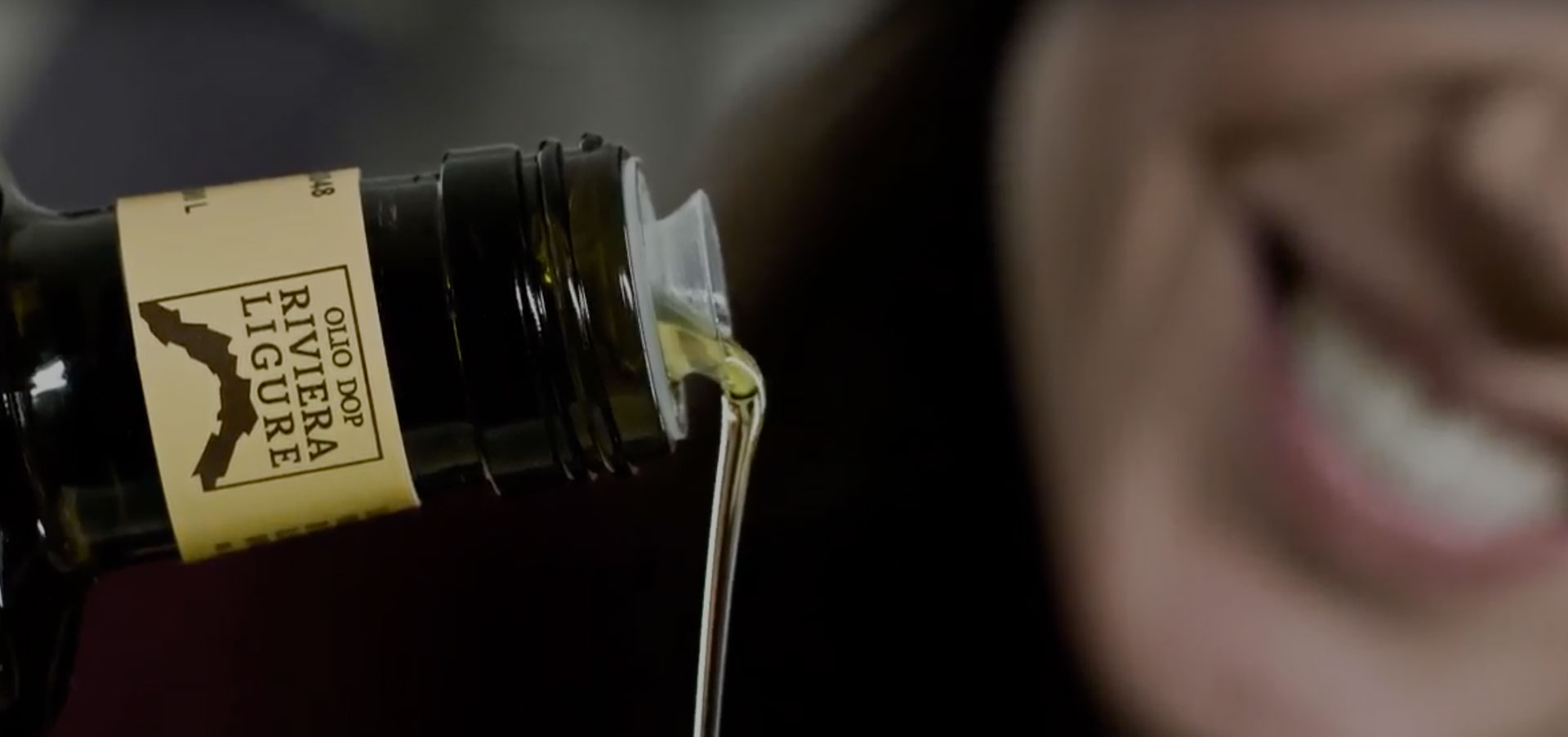Ligurian or Tuscan? When asked by journalist Alberto Mattioli from the Italian daily newspaper “La Stampa“ Is there a product that arouses envy of Italy?” the master chef Alain Ducasse replied without hesitation: “Yes, olive oil”. “But which?” insisted Mattioli. “Either Ligurian or Tuscan, it depends on what I’m cooking. But it is one of my two key ingredients”. I thank the chef, Francesco Nacci, of the Botrus restaurant in Ceglie Messapica, for showing me the article published today. The other key ingredient? Guérande salt. Oil and salt, on a slice of freshly baked bread, and Monday becomes a feast day. For anyone who wants to know more about oil, I would also recommend a text released by the Consorzio Dop Riviera Ligure, in anticipation of a trip to Imperia on Saturday 17 for a truly magnificent event that should not be missed: Three men in the kitchen.
DOP Riviera Ligure Olive Oil, real protection of the area through the production chain agreement.
Like every year at Olioliva, consumers can learn more about the oils that benefit from the Riviera Ligure Protected Designation of Origin (DOP), a symbol of the quality and traceability of an entirely Ligurian product.With its 2,300 acres of olive groves and 629 producer companies – growers, pressers and bottlers, participating in the control system – extra-virgin olive oil provides real protection for the Ligurian countryside. During the last olive-growing campaign, the Liguria region bottled 5,111.63 quintals of DOP Riviera Ligure Olive Oil, a significant increase over the 4,398.22 quintals produced in the previous year.
“Recognizable by the numbered yellow collar on the neck of the bottles, DOP Riviera Ligure Olive Oil is a guarantee for the consumer with positive benefits for olive growers in terms of income,” said Carlo Siffredi, President of the Protection Consortium. “In fact, the production chain agreement provides pressers/bottlers a discount of € 1.00 of the cost of the guarantee collar for each litre of DOP Riviera Ligure Olive Oil bottled, provided that they give the Consortium their invoices for olive purchases and tracked payments, at prices higher than € 1.44 per kg of olives at a yield of 20%.”
“It is a difficult job from an administrative point of view, involving cross-checks between control plan, accounting and financial documents that are appreciated by association members because it is the only model developed to date in all of Italy.”
“Due to the production chain agreement and product monitoring, there is no olive oil sold under the Liguria name that doesn’t conform to the production regulations and control plan, which are the best guarantee for both olive growers and consumers,” said Director Giorgio Lazzaretti.
“But now we need to give serious thought to making a quantum leap of quality in the production chain agreement for DOP Riviera Ligure Olive Oil.
During the first five production campaigns, the agreement was exclusively oriented to the production chain, but it is now necessary that the administrators and operators of the region (merchants, restaurateurs and producers) take increasing ownership of it.
We must grow in terms of awareness and empowerment. This is the only way to spread the positive effects of what we have done so far and create a long-term development model,” concluded Carlo Siffredi.The areas of action are significant if we consider the world of food service and trade in a region with a vocation for tourism such as Liguria.
As you can clearly see, Liguria is an olive-growing region that applies itself in the round. The oils that are obtained deserve special mention and Alain Ducasse has done well – in Italy operating at L’Andana – to point them out. Tuscany also stands its ground, so much so that I will make a quick trip during the week to Lucca, but also to another land of oil, Umbria, to which I will return after having been there until yesterday. Oil, while olive collecting is in full swing, is king.
Source: OlioOfficina



